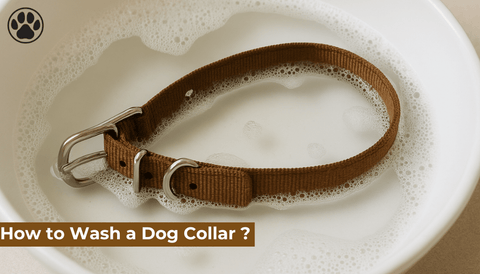
Do All Dogs Have a Black Nail ?
of reading - words
Dogs are fascinating creatures with a variety of physical traits that differ across breeds, age, and genetics. One of the most overlooked features is their nail color. Pet owners are often surprised to see some dogs with black nails, others with white or clear nails, and some with a mix of both. This raises the question: Do all dogs have a black nail? The answer is no — and the reasons why are as varied as dog breeds themselves.
What Determines the Color of a Dog’s Nails?
Several factors influence dog nail color, and understanding these helps pet owners properly care for their pup's paws.
Genetics and Breed
Just like fur and skin color, a dog's nail pigmentation is largely determined by genetics. Certain breeds are more likely to have black nails (such as Rottweilers, Labrador Retrievers, and German Shepherds), while others tend to have white or translucent nails (like Maltese, Poodles, and some Spaniels).
Age and Growth
Puppies often have lighter-colored nails that darken as they age. If you’ve noticed your dog’s nails getting darker over time, it’s likely due to natural pigment development.
Paw Pad and Nail Bed Color
The color of the paw pad often correlates with nail color. Dogs with dark paw pads usually have black nails, while those with pink pads are more likely to have white or clear nails.
Why Does Nail Color Matter?
While nail color itself isn’t an indicator of health, it plays a role in grooming and health monitoring.
Nail Trimming Visibility
It’s easier to trim white or clear nails, as the quick (the sensitive inner part of the nail with nerves and blood vessels) is visible. With black nails, it’s more challenging to see where to cut safely, increasing the risk of injury if not done carefully.
Signs of Health Problems
If your dog’s nails change color suddenly, such as going from white to black or vice versa, this could indicate an underlying health issue, fungal infection, or injury. Discoloration should prompt a visit to your vet.
Mixed Nail Colors: Is It Normal?
Absolutely. Many dogs have a combination of black and white nails on the same paw or even the same foot. This is often due to genetic variation and is not a cause for concern unless the change is recent or accompanied by other symptoms.
When to Be Concerned About Nail Color
There are times when nail color changes may indicate health problems. If you notice:
-
Cracked or split nails
-
Bleeding
-
Nail discoloration that wasn't present before
-
Licking or chewing at paws
Then it’s time to consult your vet. These symptoms may point to infections, autoimmune conditions, or nutritional deficiencies.
Nail Health Tips for Dog Owners
Proper nail care is essential for your dog’s comfort and health, regardless of nail color.
-
Trim nails regularly to avoid overgrowth and discomfort.
-
Use proper dog nail clippers or visit a groomer if you’re unsure.
-
Keep an eye out for any changes in nail texture, thickness, or color.
-
Provide a balanced diet to support healthy skin and nails.
Consider Stylish and Practical Accessories
Looking for a way to combine function with fashion? Explore our curated Dog Collar Collection, featuring collars designed for comfort, durability, and style. Our selection includes options perfect for both active and relaxed dogs — because your dog deserves the best from head to paw!
FAQ
Do all dogs have black nails?
No, nail color varies by breed, age, and genetics. Some dogs have black nails, others have white or clear ones, and some have a mix.
Why are some of my dog’s nails black and some white?
This is usually due to genetic variation and is completely normal unless there’s a sudden change in color.
Are black nails stronger than white nails?
Not necessarily. Nail strength depends more on diet, activity, and health than color.
Can I safely trim black nails at home?
Yes, but with caution. Since you can’t see the quick, trim small amounts gradually or use a nail grinder.
What if my dog’s nails change color?
If the change is sudden or accompanied by other symptoms like pain or bleeding, consult your vet.




